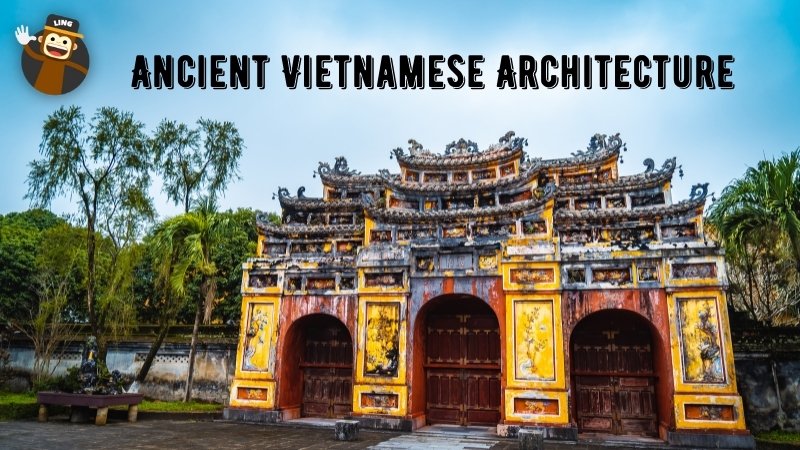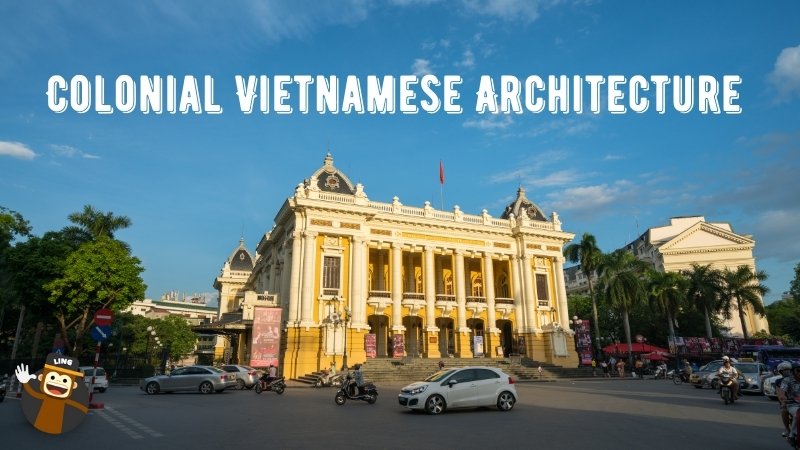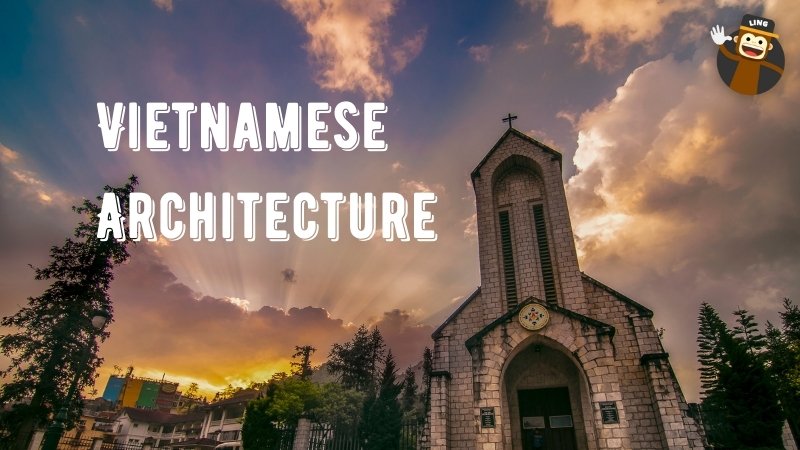Vietnamese architecture, or ngành kiến trúcis, is dotted with blissful design and perfection that will surely mesmerize everyone. If you travel to Vietnam anytime soon, this is your sign to start learning more about the secrets of this Asian country as reflected by its traditional building designs.
Learning about the past and present of traditional architecture in Vietnam and the history of royal architecture will enlighten you with unusual facts that will undoubtedly blow your mind. Such knowledge will become an excellent asset for you to explore the cities in Vietnam and make your trip worth remembering. So, want to learn more? Continue reading and get to know everything from Vietnam’s ancient architecture to modern architecture in Vietnam in this blog today!
History Of Vietnam’s Traditional Architecture
Whether you are a student of architecture or not, you will certainly agree that architecture is an art form of organizing space. Imagine having no roofs in your house or no windows to look at the clear sky from your room. Boring right? Architectural styles and work are, thus, an input of excellence that we cannot ignore.
Talking about excellence, Vietnamese architecture is one of the best examples that show the preferences of Asian people when it comes to structures. The beginning of ancient architecture in Vietnam can be traced back four thousand years back, when houses were built on stilts. Stilt houses mark the start of traditional Vietnamese architecture where the owners used the higher floor to live in, and the ground floor was used as a farm for the domestic animals to keep.
In those times, the house’s roof was unimportant, and it had only the shape of a turtle shell. With the change in dynasties, the country witnessed widespread advancement and progress in architectural designs that still cannot be beaten by foreign architectural features.
First came the Ly Dynasty and its architectural sites in the 11th century. Found in the pagoda, carvings of communal houses and temples, well-designed strong structures of dragon-shaped railings and pillars illustrate some ancient architectural examples that display the high-level creativity of the Vietnamese people at that time.
Following that, the Tran dynasty and its most prominent architectural gem, the Pho Minh tower or Pho Minh temple, further developed the identity of architecture in Vietnam. The buildings became more complex and gardens became a part of the religious architecture.
Later arrived the Le dynasty, giving rise to folk art and sculpture. Its royal palace structure still lives in the modern architecture of Vietnam. One of the most famous examples of the Le dynasty is the Thap pagoda in Bac Ninh province and the Tay Phuong pagoda with the creative statue and roof design.
In the 17th century, the Nguyen dynasty harbored the legacy of architectural gems, and its influence and progress are still seen in Vietnamese architecture. Although the ancient architecture of the original times was destroyed due to war or natural disasters, some parts like the Temple of Literature and Ngo Mon gate of Hue Imperial City are classic examples of traditional Vietnamese architecture that can be seen even in the current times.
Vietnam’s Ancient Architecture To Modern Cities
Now that we have a brief idea of the history of Vietnamese architecture and its progress, let us study the types of Vietnamese architecture in the modern day. To your amazement, Vietnamese architecture is so eclectic and unique that the locals divide it into five main parts: Vernacular design, Chinese architecture, Ethnic architecture, colonial architecture, and modern architecture.
The Ancient Architecture Of Vietnam

Ancient architecture mainly consists of the classic designs and structures that different dynasties brought into the country. The ancient architecture mainly utilized wooden structures and steep roofs for houses. Supporting materials or construction materials consisted of bricks, stones, bamboo, and soil, still seen in many village areas.
The structure of the houses was straightforward, with no fixed floor structure. They had an odd number of rooms with rafters, tenons, and mortises. The walls were wooden, or half cemented bricks. The most prominent design of all was the roof style. They were steep, and the four edges were curved and designed with motifs. However, with time, the extensive roofs with curved endings were gradually shifted towards more straight roofs with a bit of curve in the ends.
Some traditional houses can be named stilt houses and one-story houses. In each house, they follow the principle of balance and symmetry. Roofs curved at the ends, walls with arranged columns, and floors to be made based on the house, are some of the basic norms the ancients followed to build houses. The decorative statue, three-layered stairs, painted or plain columns, beams, rafters, simple or decorated doors with transparent upper parts, wooden walls, etc., were also standard designs that were popular in ancient times.
Colonial Architecture Of Vietnam

When French colonialism got into Vietnam in 1858, the flow of traditional Vietnamese architecture somewhat changed. With the influence of French architecture, Vietnam started filling up with French colonial architecture, such as the Saigon post office, Hanoi opera house, Presidential palace, etc., which can still be visited in Ho Chi Mihn city. Although different, they are lovely and aesthetically pleasing to look at.
In simple terms, the old curved roofs of Vietnam architecture then saw a new beginning of European-styled house designs that consisted of giant pillars, straight ceilings, and multi-story floors. However, the structures were not exactly like the European houses due to geographical reasons. Some modifications and adjustments were kept in check to fit the country’s needs.
Modern Architecture In Vietnam
In recent times after French influence and colonial towns were banished, Vietnam drastically changed economically and architecturally. With modern technologies and globalization blooming, new architecture trends were incorporated into Vietnamese buildings. Especially in the North and the South, the new concrete buildings with all glass windows, fancy rooms, and decorations began appearing.
The locals opposed such a development at first. They were blaming the ignorance of the builders towards ancient art and science. But with time, Vietnamese architecture has found new roots and is still finding its respective ways.
Architecture Vocabulary In Vietnamese
This blog will be incomplete without some Vietnamese architectural vocabulary. Knowing these will make this blog more engaging, allowing you to not only witness but also speak the language and culture of the locals.
Vocabulary A-C
Vocabulary D-H
Vocabulary I-S
Vocabulary T-Z
Explore Vietnam!
From the interior design of modern times to ancient rounded statues, Vietnamese architecture has a magnificence that cannot be compared to any other. A significant part of the Vietnamese culture is that despite the ongoing race of modernization, Vietnam never forgot its roots. You can still see ancient roof-style houses, wooden floors, dragon statues, and motif decorations that mark the country’s national identity. If anything, one should be inspired by the people of Vietnam and their respect for their culture.
Since you must be planning to visit Vietnam, do not forget to visit the famous architectural sites such as Notre Dame Cathedral of Saigon, Binh Son Tower, One pillar pagoda, and Bang Communal Houses.
If you find this blog helpful, check out other blogs by Ling, like the Vietnamese dragon, Flag of Vietnam, and Vietnamese culture. These articles will also become important aids for you during your journey.
Learn With Ling App

If you are new to Ling, here is what you need to know.
Ling app is a language learning app that will become the perfect guide for you during your travel. It delivers informative content on language topics like common vocabulary, history, basic routines, and many more. All you have to do to access these valuable resources is download the app from Appstore or Playstore and use it on your chosen device.
The best part of the app is that you can also learn other languages like Chinese, Spanish, or even Hindi, as Ling covers more than 60 languages for you to learn. It also features an AI chatbot that provides interactive sessions to help retain knowledge and improve communication. Once you get used to Ling, no one can stop you from enjoying your trip like a local. So, download Ling now and learn Vietnamese right away!



















